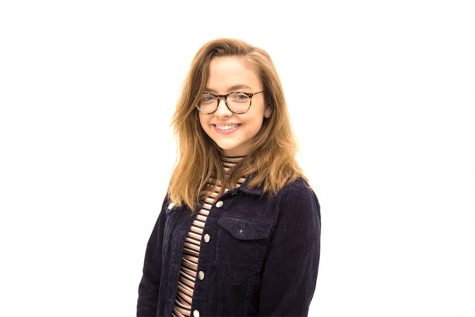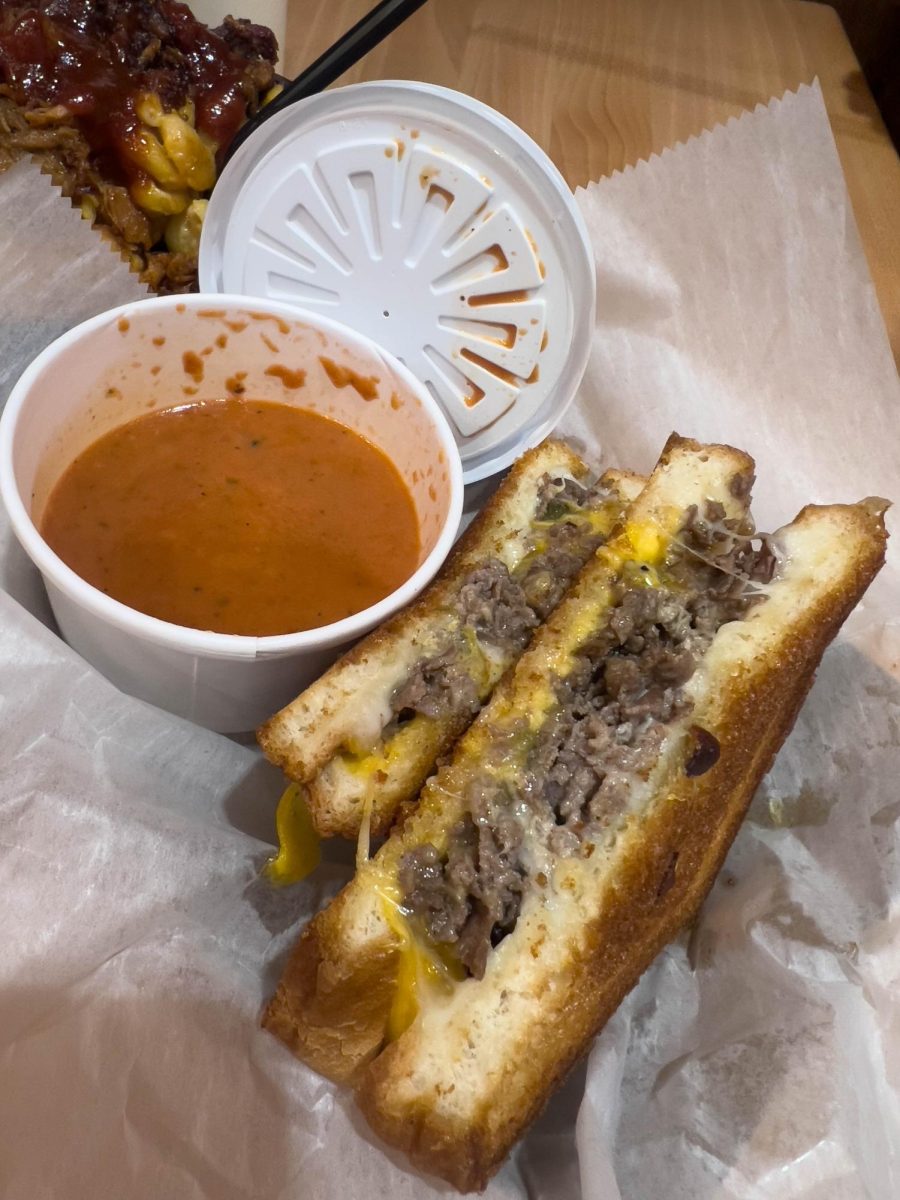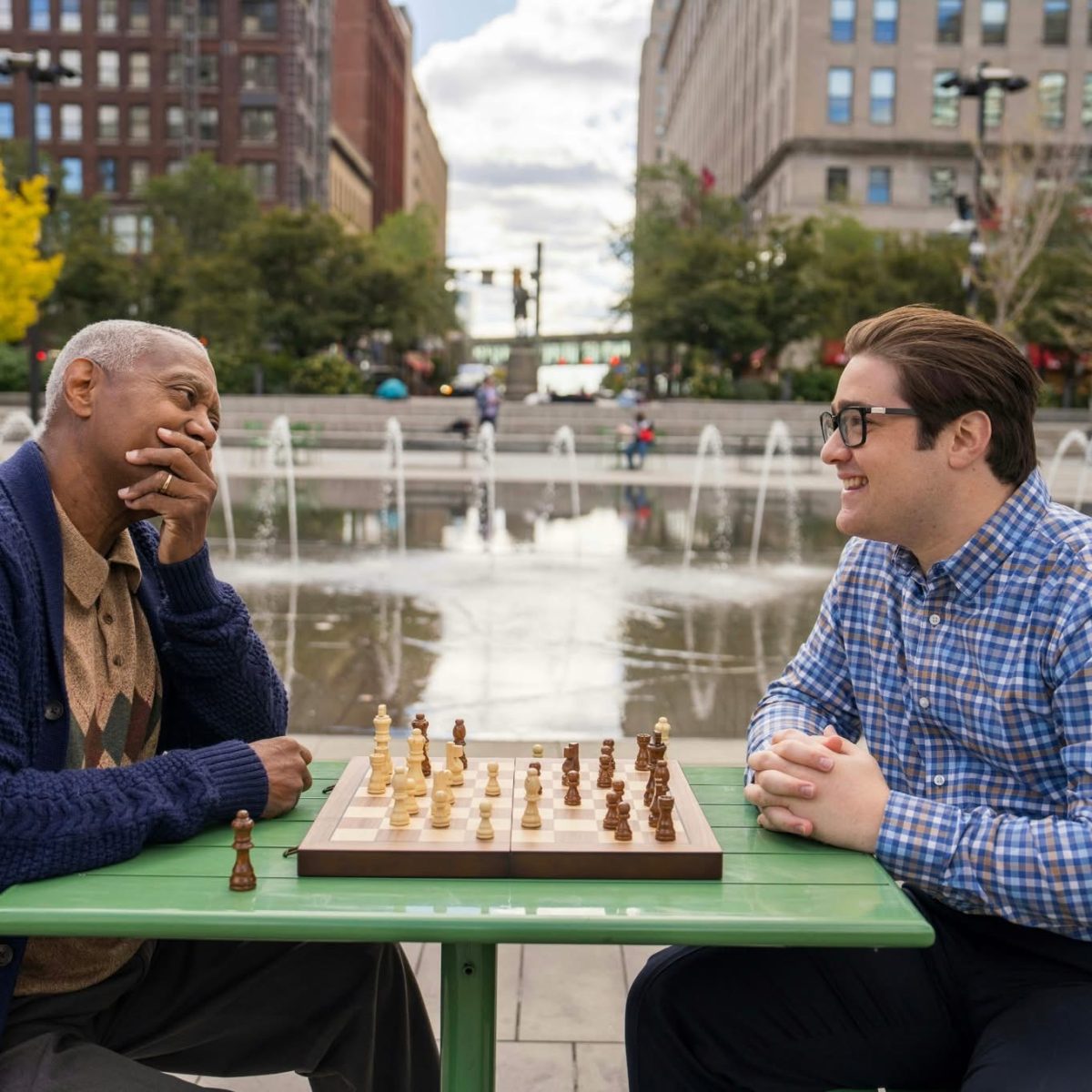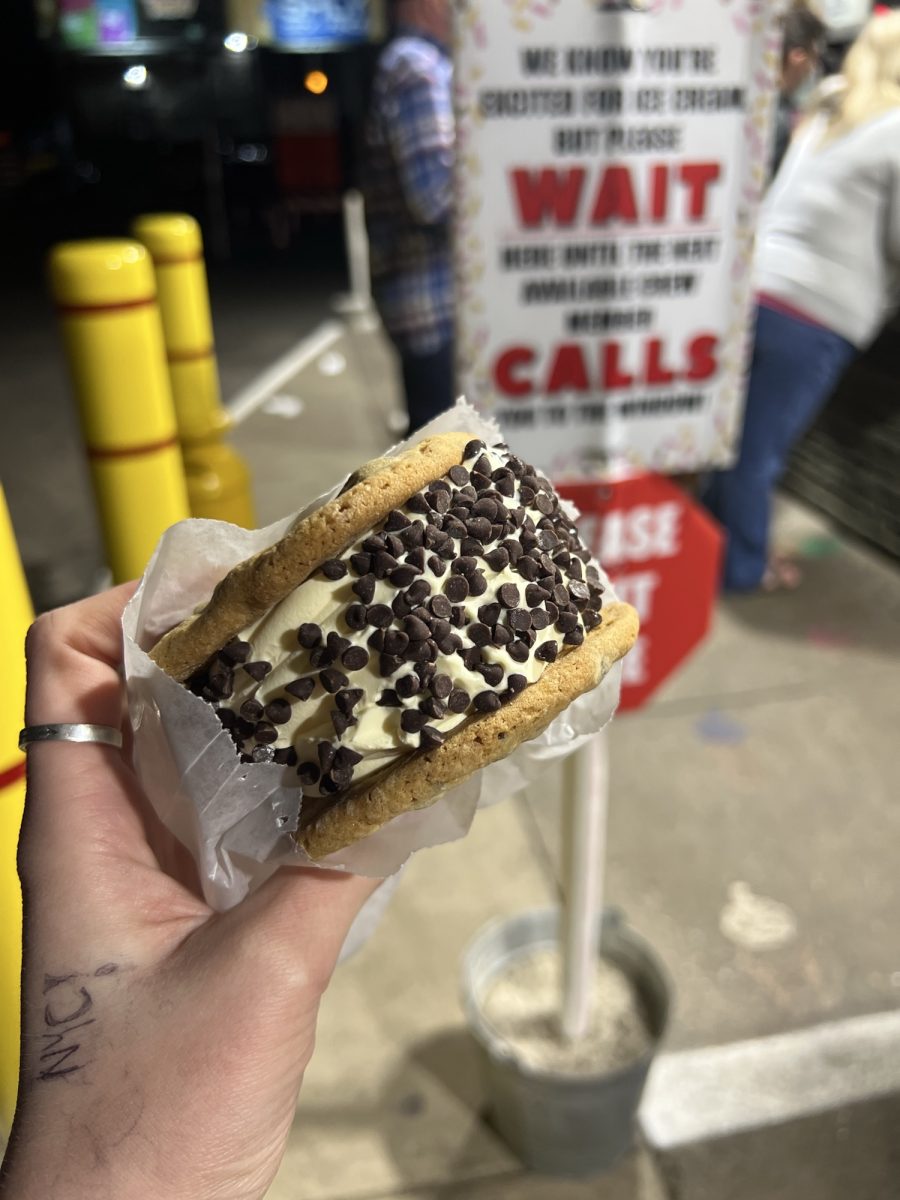
photos by Gracey Evans
Terrence Wyrick shows off his art at the “Home is Where the Art Is” event organized by Pittsburgh Mercy’s Operation Safety Net and Point Park University’s Confluence Psychology Alliance Friday night in Lawrence Hall Multipurpose room.
Across university history, Lawrence 200 has been transformed to serve many different on-campus purposes — from regularly holding Honors Student Organization meetings to the annual freshmen Pioneer Pub event. However, Friday, the multi-purpose room converted into something Point Park had never seen before.
From 6-9 p.m., the room turned into an art gallery. Walls were chock full of original art pieces, ranging from collections of Star Wars-themed canvases, abstractions, beaded necklaces and bracelets and much more. Catering was provided. Springsteen and Arcade Fire played over the sound system. An estimated 250 people streamed through the doors – many of them placing golden star stickers on items that they wanted to buy from artists before leaving.
Although the atmosphere and displayed work equated that of any city art show, this one was unique. Beyond the fact that they are artists, something distinctive bound these 23 individuals together – they all have experienced homelessness.
Students in tie-dyed T-shirts from Point Park’s Confluence Psychology Alliance kept track of sales. These students, alongside countless others from Pittsburgh Mercy’s Operation Safety Net, are responsible for making this event come to fruition.
“I think it’s fantastic; it’s beautiful. I love partnerships and when they work, and this is a great example of when a partnership works – the Confluence Psychology Alliance, Mercy and Operation Safety Net,” Dr. Robert McInerney, associate psychology professor and advisor to Confluence, said at the event. “What’s nice about this is it’s a win-win where it’s just beautiful for everyone. We can help each other out, and help with advertising, and I think you can see the result of that tonight with the numbers, and you can see lots of the Confluence students working here and that makes me feel wonderful too. And let’s not forget the artwork.”
It all started in 2014 when Operation Safety Net began holding open studios in the Wellspring Drop-in Center and Trail Lane Apartments – a resource-based location where those who identify as homeless can access facilities.
Terrence Wyrick, an artist whose work was featured at the gallery, got involved with the open studio through accessing the Wellspring platform.
“I would go down to Wellspring every now and then to get the resources as far as living arrangements, things like shelter, showers…and they were having an art gallery down there on a Friday,” Wyrick said. “I’m from California, and when I had my house there, my friends would come over and we would just start throwing paint on the wall. I love graffiti art, and anything we would come up with on a canvas, we would flip it upside down and say, ‘what do you see?’ So I started doing art at Wellspring. Then I submitted my stuff.”
Jacqueline Reynolds, a master’s level art therapist, is in charge of the open studio at Wellspring – a space open twice a week that she said exists to encourage individuals to “relax, have fun, interact, create, play and explore and above all, to have permission to do all these things.”
“Jacqui put all this together,” President and CEO of Pittsburgh Mercy Health Sister Susan Welsh said at the event. “This whole thing was a brainstorm of the people who work with the homeless population. It’s just wonderful therapy for people to do this and be able to express themselves, and of course, at Pittsburgh Mercy, we are committed to whatever it takes for people to be in a healing environment.”
In the past year and a half, over 200 different individuals have stepped through the doors of the open studios. Here, they were able to connect and engage with services, have positive peer interaction and foster and develop their artistic identities.
Reynolds delivered an emotive speech halfway through the gallery event – standing on a couch, a symbolic soapbox of sorts, to express her gratitude concerning the turnout and involvement, as well as deliver the idea and mission behind this profound endeavor.
“We would not have an art show filled with such variety of personal, unique, exciting, authentic and engaging art work without the artists who were willing and open to show their pieces here tonight,” Reynolds said.
Reynolds said that most of the artists have always appreciated art in some facet. Many recall playing around with different media as children, while others took art classes in high school. Reynolds said that despite having made art their entire lives – some for decades – these individuals still struggle to call themselves artists.
“It’s interesting because we’re all so quick to assign labels to things,” Reynolds said. “More often than not, it seems we’re willing to embrace the negative, maybe disparaging and dehumanizing labels before we consider the labels that empower, inspire and encourage us to be more than what others see or what others think they see — to be the best versions of ourselves — whatever that means, because it looks different for each and every one of us as individuals…as different and unique as each work of art in this room tonight.”
Reynolds ended her speech with a quote from author Kurt Vonnegut.
“To make art, no matter how well or badly, is a way to make your soul grow. So do it.”














